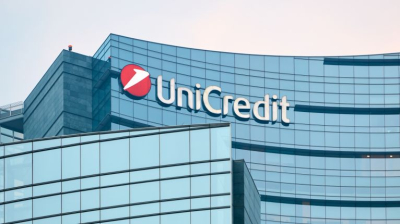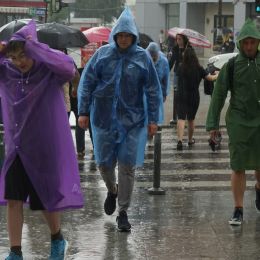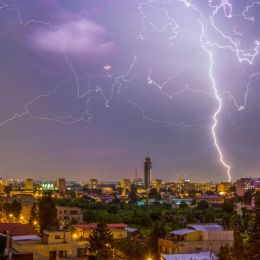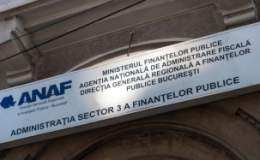“After years of robust growth, Romania is currently experiencing a significant economic slowdown, owing to declining exports, falling construction activities and slowing credit growth. However, International Financial Institutions have stepped in to help mitigate the impact of the crisis and Romania’s medium-term outlook remains favourable with good potential for the resumption of growth once global conditions improve”, said EBRD Lead Economist, Peter Sanfey.
The economies of central and eastern Europe are expected to contract by an average of 6.3 percent in 2009 following steep output declines in the first half of the year. Signs of positive growth in the third quarter of 2009 suggest that the recession is now bottoming out in many countries of the EBRD region. However, any upturn in 2010 is likely to be fragile and patchy.
The EBRD’s Transition Report 2009, which will be published in full next month, points out there are likely to be significant cross-country differences in output growth in 2010, masked by an average growth rate for the region of about 2.5 percent.
“It is also clear that the social costs of the global economic crisis are only likely to be felt in earnest next year, when corporate bankruptcies and unemployment will continue to rise. Growth over the medium term in the EBRD region is also likely to be below the trend experienced over the last decade,” said EBRD Chief Economist Erik Berglof.
Although year on year growth in 2010 is now projected to be higher than the 1-1/2 percent seen in the EBRD’s May forecasts, this mostly reflects the recovery from a deeper than anticipated downturn in the first half of this year, rather than a more vigorous economy during 2010.
Factors restraining growth in 2010 include the subdued pace of export market recovery (particularly in the Euro area) and continuing tight credit conditions, as banks continue gradually to shrink their assets in the region and as lending to households and small firms remains constrained by rising non-performing loans.
Economic projections for Romania:
- IMF expects the country’s economy to come back in the positive territory in 2010;
- National Prognosis Commission said Romania was likely to emerge from recession in second quarter 2010;
- Capital Economics says recession may last into 2010, adding that optimism on the country’s recovery is premature;
- Governor Mugur Isarescu expects the economy to pick up in fourth quarter;
- ING sees U-shaped recession;
- Raiffeisen: Romanian economic will hit rock bottom in fourth quarter.
- Pogea doesn’t rule out a 0.5% economic contraction in 2010
Recovery masks cross-country differences
Economies that continue to face problems in their banking sectors and domestic obstacles to a return of confidence could contract further in 2010 or show only flat growth.
In some countries with hard currency pegs, the need to adjust real exchange rates through prices and wages could also weigh on aggregate demand. So could the need for further fiscal adjustment. This could slow the recovery in countries such as Bulgaria, Latvia, or Lithuania.
The speed of recovery is particularly uncertain in Russia and Kazakhstan, which benefit from stronger fiscal positions, but at the same time suffer from weak banking systems and high non-performing loans and commodity dependence.
The recovery prospects for these countries will depend on the success of the authorities in cleaning up banking systems, as well as the strength of the international recovery, particularly through its impact on commodity prices.
Russia’s economy is expected to shrink by 8.5 percent on a year-on-year basis in 2009, followed by a rebound in late 2009 and growth of about 3 percent in 2010 year-on-year. Kazakhstan will suffer a much milder output decline this year (of about 1.5 percent) but the recovery is expected to be weak, in the order of +1.5 percent.
Relatively faster 2010 growth, in the order of between about 2 and 5 percent is expected in some internationally competitive countries with relatively sound pre-crisis banking systems, such as Albania, Poland, Slovakia, and Slovenia.
Some commodity rich countries including Azerbaijan, Mongolia, Turkmenistan, and Uzbekistan, whose financial systems were smaller and less affected by the crisis, and whose growth is mostly driven by commodities, are also expected to grow faster in 2010, in the order of 5 percent or more.
In Hungary, which was hit particularly hard at the start of the crisis, the crisis has been contained thanks to strong international support as well as sound domestic policies. However, its growth is expected to remain slow in 2010 due to necessary fiscal adjustment and a continued credit crunch. It is expected to show slightly negative growth next year, driven by a weak economy in late 2009 and early 2010.
Citeste si:
Calculator Salariu: Află câți bani primești în mână în funcție de salariul brut »
Te-ar putea interesa și:



















































































![HR [PLAY] Tech Workout - 11...](https://www.wall-street.ro/image_thumbs/thumbs/973/973fe0a3888d417feff63de42e814180-260x260-00-65.jpg?v=1713552668)









